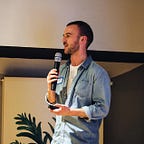How technology can help you maximise a competitive advantage
It is said that for a company to be successful, it needs a competitive advantage, but what do we mean by this phrase?
Oxford Dictionary defines it as:
An advantage over competitors gained by offering consumers greater value, either by means of lower prices or by providing greater benefits and better servicing facilities that could justify higher prices
In short, you’re doing something others can’t do as well or at all. It’s something that makes people choose your company over another.
One key competitive advantage for the FT is its Data Journalism team. Their coronavirus tracker became our most viewed article of all time, bringing millions of people to the FT for the first time. Few other publishers have the ability to take such complex subject matter as Uber’s fiendishly complex business model or the European gas market and turn it into something compelling and easy to understand. Our analytics have proven that this type of interactive content is something that promotes subscriber loyalty .
The problem? This talented team was hampered by its toolkit; forced to produce their content on a separate tech stack. As a result, this type of content — known as ‘Interactives’ — were custom-built and outputted on a separate site (ig.ft.com) rather than on FT.com and on our apps. The difficulty in producing this type of content and fully integrating it within the wider FT meant that we published fewer such articles than our competitors.
The FT’s Data Journalism team is undoubtedly a competitive advantage, but technical limitations meant we weren’t able to exploit that advantage as best we could.
So how do we maximise this competitive advantage?
Frame the problem correctly to avoid confusion and save time
We soon realised that the term ‘Interactives’ was multidimensional and that different teams had a different view on what was meant by this.
We solved this by breaking down the problems by frequency and impact:
- 80% covered ‘day-to-day’ journalism — regular articles, produced daily, that required visualisations such as charts and graphics to better tell the story
- 15% covered ‘feature’ journalism — in-depth articles, produced every 2–4 weeks, that required features such as audio or scrollytelling to create a visually rich story
- 5% covered ‘bespoke’ journalism — these are one-off, high-impact pieces, produced every 3–6 months, for example the Uber Game
This breakdown was important as it allowed us to reach a consensus on what problems we were solving. In this case, we felt the 80% bracket was the place to start. It was easier to solve, had the most impact and would help us learn more about how to do the 15% and 5%.
Start with a hypothesis to find the right solution
We knew, thanks to our Data Journalism colleagues, that for the 80% there was off-the-shelf tooling that might meet the team’s needs. We identified several hypotheses and set about deciding how to validate them. Here are some examples:
We believe that [solution] will…
…enable us to produce routine graphs and charts 50% faster
…be capable of being displayed on FT.com and our apps
…help us preserve our competitive advantage
…be accessible*
*Making your site usable by as many people as possible, including those with disabilities.
The way we validated many of these was by ‘doing’ — for us this meant prototyping the solution end-to-end to understand it better. For our Data Journalists, validating some of their own hypotheses, this meant recreating previous visualisations using the tool. Our colleagues working on our Content Management System (CMS), Apps and Data Pipeline also played an important role in this approach.
This experimentation helped give us confidence that this solution was the right one for the FT and all teams involved.
And, crucially, this solution allowed us to make custom templates. So whilst we chose a third-party tool, this meant that we could create visualisations that could not be copied by our competitors. We are preserving and reinforcing a competitive advantage.
The impact
Introducing this tool gave our Data Journalists a new way to produce the ‘80%’. What we’ve seen since then is not just routine charts and graphs but some incredibly creative uses of the tool.
Examples include this live chart showing Mediterranean wildfires or, my personal favourite, the ‘Draw your own chart’ article for COP-26.
The response from our readers has been even better:
We also know from looking at the data that these articles also outperform on views and time on page — predictors of customer loyalty.
Key takeaways
- Identify your competitive advantages and anything that might prevent you from fully exploiting them
- Framing the problem in the right way is vital, especially when you have multiple teams and stakeholders — getting early alignment on this will save you time and effort later
- Start with hypotheses; identify your riskiest and validate them systematically
- Collaborate with others, especially those traditionally seen as your stakeholders
Recognition
Being part of this project has been a joy and made all the more so thanks to the wonderful people who have been part of it. Thank you to our friends in Data Journalism and Editorial. Thanks also to my team, Storytelling, and our colleagues in Spark, Content & Metadata and Apps.
If you’d like to talk to us about anything you’ve read in this piece, please email me at martin.fallon@ft.com
